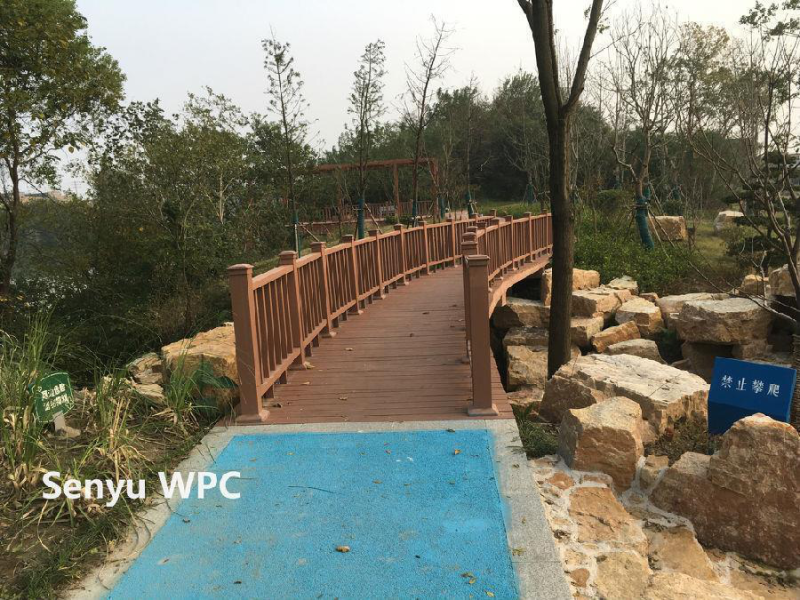OUTDOOR WPC DECKING |

Advantages:
It Doesn’t Check or Split -- Solid lumber expands and contracts with heat and especially moisture content in the air. During the course of a year the deck wood experiences a large range of internal stresses from this cycle of heat and cold, wet and dry. Over time the solid lumber develops cracks and checks that allow water and dirt to accumulate.
It Won’t Rot -- Although solid-sawn wood can be treated to resist rot for many, none of them compare to the blends used in alternative decking.
It Never Requires Staining or Sealing -- Annual water sealing and regular staining is the best way to help protect solid lumber decking over time. Since composites don’t need this protection, you are relieved of your regular maintenance chores and this helps offset the initial cost of the decking. The color you choose is the color it stays – apart from fading and weathering.
It is friendly to nature: decking has FSC certificate, which shows friendly attitude towards tropical forests.
Disadvantages are:
It can Mildew -- Although any decking installed in the shade has a tendency to mildew. Like any deck, they require regular sweeping and washing to keep the decks clear of dirt and debris. If your decking does show mold or stains, it’s recommended to clean them with a mixture of detergent and fungicide.
It can Fade -- Exposure to sunlight will cause the wood-plastic decking to fade so it’s important to choose your decking color by inspecting a deck that’s already installed, or at least looking at weathered decking. The color fade is generally complete after about 6 months.
Thermo dilatation – WPC decking has thermo elongation in longitudinal direction (about 4 mm per meter). This fact must be taken in account in installation.
